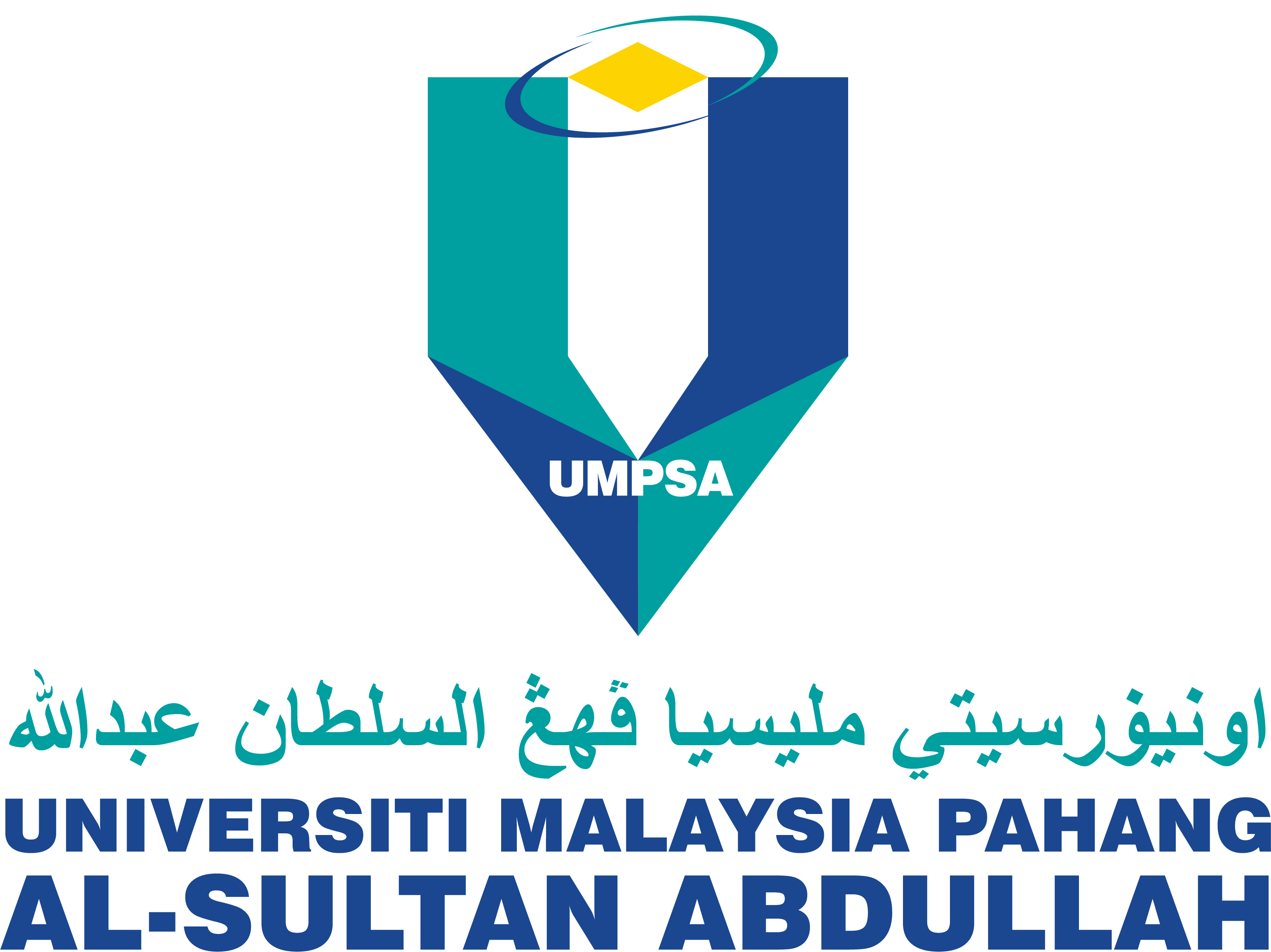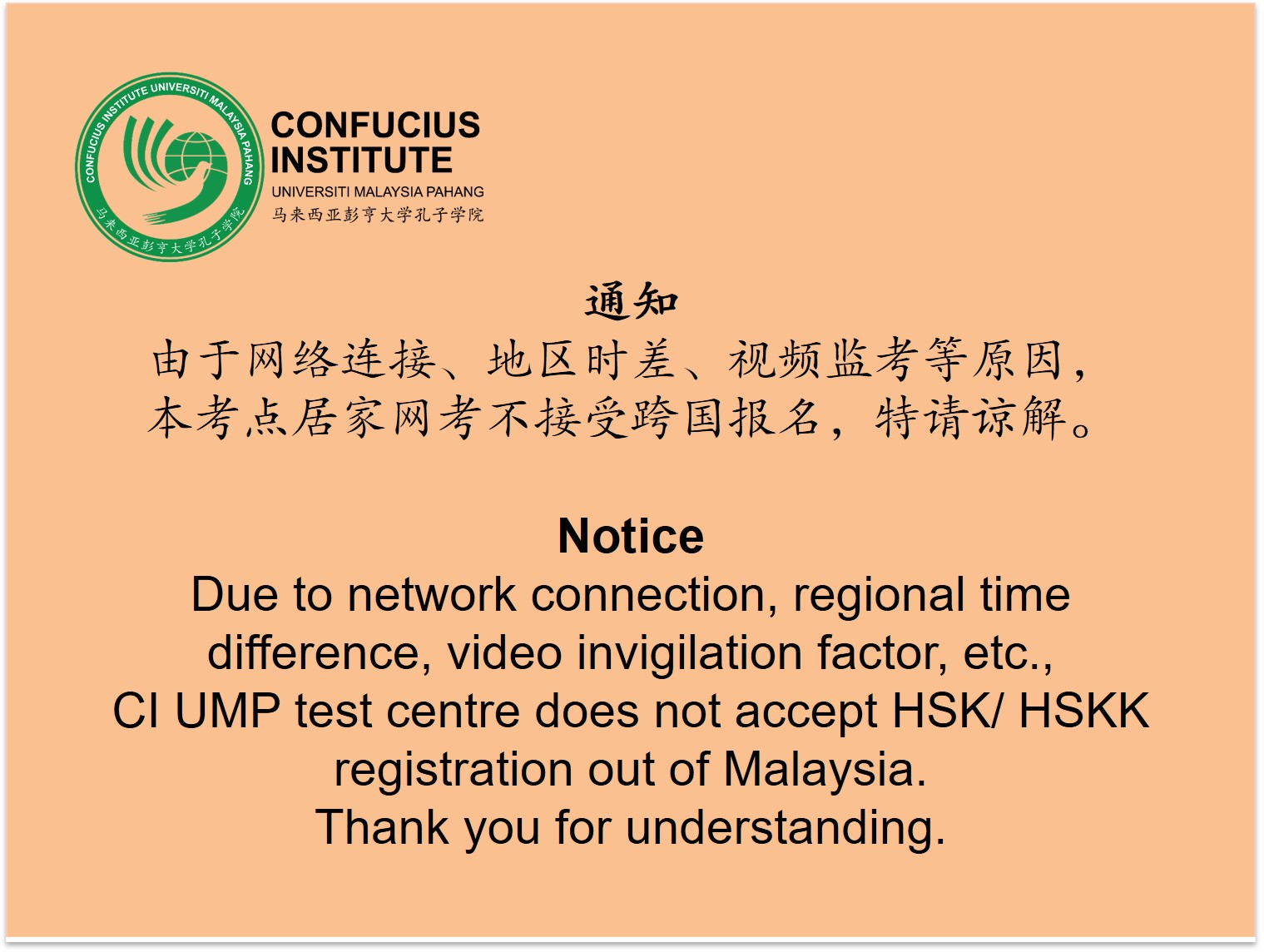Elementary - Basic Chinese Proficiency Certificate
UNIVERSITI MALAYSIA PAHANG
MANDARIN LANGUAGE AND CULTURE CENTRE
Basic Chinese Proficiency Certificate
1. COURSE SINOPSIS
The course is intended for students without any prior knowledge of Chinese language and it aims to provide them with a good foundation in basic Chinese. Course contents include Basic chinese Phonetics (Hanyu Pinyin system), pronunciation, basic sentence structures, selected texts for reading comprehension, vocabulary building, as well as for listening and conversational practices. Fundamental passage writing, aspects of grammar and Chinese culture will also be introduced at appropriate points. The course contents will be designed with close references to Chinese Proficiency Test (HSK)* Syllabus so that the students will be able to register for the Test at Level III.
The students will learn through classroom activities, modules interactive learning software and an excursion activity. They are expected to be able to recognize 1000 Chinese characters, as well as to communicate fluently for general purposes before the end of the course.
Students will be evaluated in all language skills, namely listening, speaking, reading and writing.
*The Chinese Proficiency Test (or HSK): The HSK measures the proficiency level of non-native speakers of standard Chinese and is used as a guideline for admission to colleges and universities in China and Southeast Asia. Test-takers are issued certificates when they meet the minimum level of proficiency required within each level of testing. Because the HSK has developed a prominent status in assessing Chinese language proficiency, it is commonly used as a reference standard in job recruiting, both within China and in countries around the world where Chinese language skills are necessary.
2. COURSE OBJECTIVES
Upon completion of this course, students will be able to :
2.1 communicate fluently in most daily conversations;
2.2 read and comprehend selected texts;
2.3 write short passage for selected topics;
2.4 analyze and explain some of the grammatical items.
3. COURSE CONTENT & TIME ALLOCATION
|
Course Content |
Time Allocated (Hours) |
|
|
1 |
Listening & Speaking (including Chinese Phonetics) |
120 |
|
2 |
Reading (including grammar & vocabulary) |
180 |
|
3 |
Writing (including Chinese characters writing & passage writing) |
150 |
|
4 |
Language Lab & Self Access Learning. |
30 |
|
5 |
Excursion Activity. |
30 |
|
Total (17 weeks x 30 hours/week) |
510 |
4. EVALUATION STRUCTURE
In general, the evaluation structure will consist of 60% coursework or assignment and 40% final examination as follow:
|
ITEM |
PERCENTAGE % |
|
|
Quizzes |
15 |
|
|
Preseantation |
20 |
|
|
Mid term Test |
15 |
|
|
Self Access Assignment |
10 |
|
|
FinalExamination |
40 |
|
|
Total |
100 |
|
Candidates who have successfully completing the course will be awarded Basic Chinese Proficiency Certificateby UMP.
5. MAIN REFERENCES INCLUDE
1. Liu Rong (2007), Chinese Speaking - Elementary I, Sinolingua, Beijing, China.
2. Liu Rong (2007), Chinese Speaking - Elementary II, Sinolingua, Beijing, China.
3. Kang Yuhua & Lai Siping (2005), Conversational Chinese 301 V 1, Beijing Language & Culture University Press, Beijing, China.
4. Kang Yuhua & Lai Siping (2005), Conversational Chinese 301 V 2, Beijing Language & Culture University Press, Beijing, China.
5. Liu Xun (2004), New Practical Chinese Reader 1. University Of Languages, Beijing, China.
6. Liu Xun (2004), New Practical Chinese Reader 2. University Of Languages, Beijing, China.
7. Liu Xun (2004), New Practical Chinese Reader 3. University Of Languages, Beijing, China.
8. Liu Xun (2004), New Practical Chinese Reader 4. University Of Languages, Beijing, China.
9. Yi Hongchun (2006), Elementary Chinese Characters, Sinolingua, Beijing, China.
10. Wu Xiaolu & Cheng Zhaohui (2008) Talking About Chinese Culture I, Beijing Language & Culture University Press, Beijing, China.
11. Wu Xiaolu & Cheng Zhaohui (2008) Talking About Chinese Culture II, Beijing Language & Culture University Press, Beijing, China.
12. Ross, Claudia (2006), Modern Mandarin Chinese Grammar, Routledge, New York.
6. IMPLEMENTATION
|
8 WEEKS OF CLASS LESSON |
1 WEEK EXCURSION ACTIVITY |
1 WEEK BREAK |
8 WEEKS OF CLASS LESSON |
1 WEEK EXAMINA-TION |
Note : HSK or Chinese Proficiency Test (Level III) usually held in April & November each year.
7. STAFFING AND LOGISTIC IMPLICATION
7.1 Staffing Implication :
The implementation of the course will require a minimum of two full time teaching staff. Thus MLCC should either recruit itself two new Chinese teacher or make request to HU to supply two volunteer Chinese Teachers from Hanban.
7.2 Logistic Implication :
MLCC will temporarily utilize those lecture rooms and multimedia language labs available in the CMLHS.
8. SUGGESTION
It is proposed that the course of Basic Chinese Proficiency Certificate be implemented starting from December 2010.
9. FEES
RM 7000 (including a trip to Hebei University China, estimated cost RM2600 )
Fees stated are calculated based on a minimum of 10 students per class and inclusive of modules and registration cost.
Class can be conducted outside UMP campus with extra charges on transportation and cost of venue.








